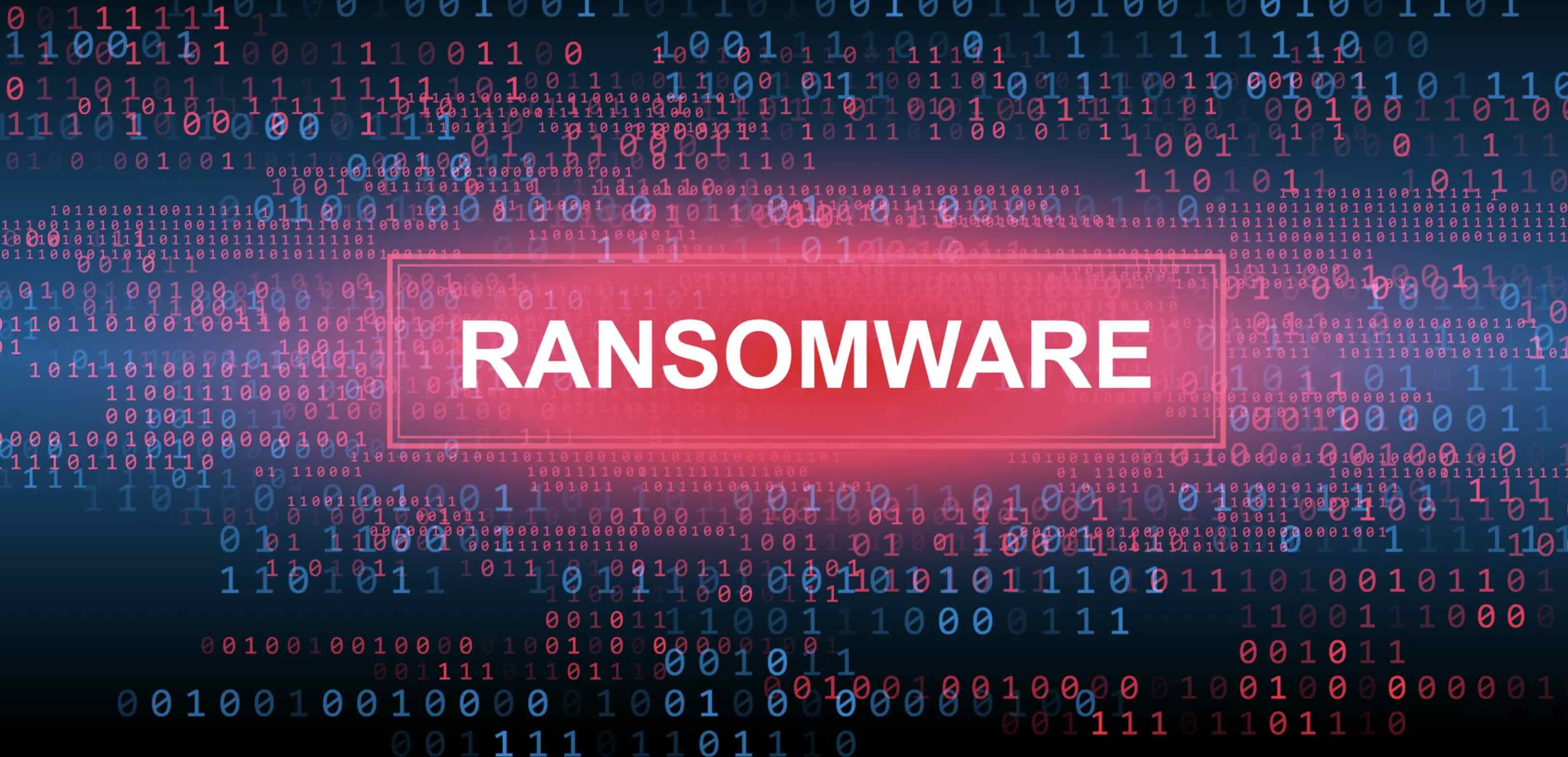Home>Home Security and Surveillance>How An Intrusion Detection Can Protect Against Ransomware


Home Security and Surveillance
How An Intrusion Detection Can Protect Against Ransomware
Modified: October 21, 2024
Protect your home with an effective intrusion detection system. Shield yourself against ransomware and ensure utmost security with our home security and surveillance solutions.
(Many of the links in this article redirect to a specific reviewed product. Your purchase of these products through affiliate links helps to generate commission for Storables.com, at no extra cost. Learn more)
Introduction
Welcome to the digital age where technology has become an integral part of our lives. While it has brought numerous benefits, it has also given rise to new challenges, such as the threat of cyberattacks. One particularly insidious form of cyberattack is ransomware.
Ransomware is a malicious software that infiltrates a computer system and encrypts the victim’s files, making them inaccessible. The attackers then demand a ransom payment, usually in the form of cryptocurrency, in exchange for the decryption key. These attacks can wreak havoc on individuals, businesses, and even governments.
As the threat of ransomware continues to grow, it is crucial that we take appropriate measures to protect ourselves and our valuable data. One effective solution is the implementation of an intrusion detection system (IDS).
In this article, we will explore what ransomware is, how it works, and the role that intrusion detection plays in protecting against these attacks. We will also discuss the different types of intrusion detection systems, their features and benefits, and best practices for implementation. Lastly, we will examine real-life case studies to showcase the effectiveness of intrusion detection systems in preventing ransomware attacks.
By the end of this article, you will have a comprehensive understanding of how an intrusion detection system can be a powerful tool in safeguarding your systems and data from the devastating effects of ransomware.
Key Takeaways:
- Intrusion Detection Systems (IDS) act like virtual watchdogs, spotting and blocking ransomware attacks early to prevent further damage. They’re a crucial part of a comprehensive defense strategy against cyber threats.
- By continuously monitoring network traffic and host activities, IDS helps organizations stay ahead of evolving ransomware threats, safeguarding systems, data, and reputation in the digital age.
What is Ransomware?
Ransomware is a type of malicious software designed to block access to a computer system or its files until a ransom is paid. It is a form of cyber extortion that has become increasingly prevalent in recent years. Ransomware attacks can cause significant disruption and financial loss for individuals and organizations across the globe.
Ransomware typically enters a system through phishing emails, malicious downloads, or by exploiting vulnerabilities in software. Once the ransomware is executed, it quickly encrypts the victim’s files, rendering them unreadable and inaccessible. The attackers then display a ransom note, explaining the ransom payment process and how to obtain the decryption key.
What makes ransomware particularly dangerous is its ability to spread rapidly across networks, infecting multiple devices and systems. This makes it a lucrative choice for cybercriminals, as they can potentially hold an entire organization hostage and demand a substantial ransom.
Ransomware attacks have evolved over time, with attackers using increasingly sophisticated techniques. Some variants of ransomware even incorporate features such as data exfiltration, where the attackers steal sensitive information before encrypting the files. This creates an additional layer of threat and puts victims at risk of data breaches and further extortion.
The ransom demanded by attackers can vary widely, ranging from a few hundred dollars to thousands or even millions. Payment is often demanded in cryptocurrency such as Bitcoin, making it difficult to trace the attackers. However, law enforcement agencies and cybersecurity experts strongly discourage victims from paying the ransom, as there is no guarantee that the attackers will provide the decryption key or that paying will prevent future attacks.
Ransomware attacks can have severe consequences for individuals and organizations. They can result in financial losses, reputation damage, and disruptions to critical services. In some cases, ransomware attacks have also impacted essential infrastructure like hospitals, causing potential harm to human lives.
As the threat of ransomware continues to evolve and grow, it is crucial for individuals and organizations to implement robust security measures to protect against these attacks. One of the key components of an effective defense strategy is intrusion detection.
How Ransomware Attacks Work
Ransomware attacks employ various strategies to infiltrate and compromise computer systems. Understanding how these attacks work can help individuals and organizations better protect themselves against this growing threat.
1. Delivery: Ransomware is commonly delivered through phishing emails, which trick recipients into clicking on malicious links or opening infected attachments. These emails often appear to be from trusted sources but contain hidden malware.
2. Execution: Once the ransomware is delivered, it executes on the victim’s system. It can exploit software vulnerabilities, gain administrator privileges, or use social engineering techniques to trick users into granting access.
3. Encryption: The next step involves encrypting the victim’s files using a strong encryption algorithm. This renders the files unreadable without the decryption key, effectively holding them hostage.
4. Ransom Note: After encrypting the files, ransomware displays a ransom note, typically in the form of a pop-up window or a text file. The note contains instructions on how to pay the ransom and provides a deadline for payment.
5. Ransom Payment: The attackers demand payment in cryptocurrency, typically Bitcoin, to make it difficult to trace the transaction. Victims are often provided with detailed instructions on how to obtain the necessary amount and make the payment.
6. Decryption: If the victim decides to pay the ransom, the attackers, in theory, provide the decryption key to unlock the encrypted files. However, there is no guarantee that paying the ransom will result in the safe return of the files, and it may encourage further attacks.
It’s important to note that not all ransomware attacks follow this exact sequence of steps, as attackers continually evolve their tactics to bypass security measures. Some variations of ransomware employ more sophisticated techniques, such as leveraging zero-day vulnerabilities or utilizing advanced encryption methods. Additionally, attackers may employ social engineering techniques to manipulate victims into paying the ransom.
The rapid spread of ransomware is also facilitated by its ability to exploit vulnerabilities in connected devices and networks. Once a system is compromised, ransomware can quickly propagate to other devices, potentially infecting an entire network.
To protect against ransomware attacks, it is crucial to implement a multi-layered security strategy that includes robust intrusion detection systems (IDS) and other preventive measures.
The Role of Intrusion Detection
Intrusion detection plays a pivotal role in defending against ransomware attacks and enhancing overall cybersecurity. It serves as a critical component of a comprehensive security strategy, alongside other preventive measures such as firewalls, antivirus software, and user awareness training.
The primary function of an intrusion detection system (IDS) is to monitor network traffic and identify any suspicious activities or behaviors that could indicate a potential intrusion. It acts as a virtual watchdog, constantly analyzing incoming and outgoing traffic and comparing it against a database of known attack signatures and behavioral patterns.
When it comes to ransomware attacks, intrusion detection systems are beneficial in several ways:
1. Early Detection: IDS can detect the presence of ransomware within a network or system at an early stage. It can identify unusual communication patterns, unauthorized access attempts, or suspicious file modifications, enabling security teams to respond promptly and minimize the impact of an attack.
2. Real-Time Monitoring: IDS provides real-time monitoring of network traffic and system activities. It can detect and alert on anomalous behavior, such as a sudden surge in file encryption activity or unusual outbound network connections that may indicate ransomware communication with command-and-control servers.
3. Attack Prevention: Intrusion detection systems help prevent ransomware attacks by blocking suspicious traffic or activities. They can automatically quarantine or isolate infected devices, preventing the spread of ransomware across the network and limiting its impact.
4. Log Analysis: IDS logs provide valuable insights into the behavior of the ransomware and the attack vectors used. Security teams can analyze these logs to understand how the attack occurred, identify vulnerabilities, and strengthen the defenses to prevent future attacks.
5. Threat Intelligence: IDS constantly updates its database with new attack signatures and patterns, leveraging threat intelligence from various sources. This allows it to efficiently identify and respond to emerging ransomware variants and new attack techniques.
6. Compliance and Reporting: IDS generates detailed reports and logs, which can be used for compliance purposes and incident response. This data can be crucial in understanding the impact of an attack, initiating remediation efforts, and communicating with stakeholders.
It is important to note that while intrusion detection systems are a valuable tool in combating ransomware, they should be used in conjunction with other security measures. Implementing a layered defense strategy that includes regular patching, data backup, user awareness training, and incident response planning is essential for comprehensive protection against ransomware and other cyber threats.
Next, let’s explore the different types of intrusion detection systems and their specific features and benefits.
Types of Intrusion Detection Systems
There are two main types of Intrusion Detection Systems (IDS): network-based IDS (NIDS) and host-based IDS (HIDS). Each type plays a distinct role in identifying and mitigating ransomware attacks.
1. Network-Based IDS (NIDS):
A NIDS focuses on monitoring network traffic to detect and respond to potential intrusions. It analyzes packets flowing through the network and compares them against known attack signatures or abnormal behavioral patterns. NIDS can be deployed at various points on the network, such as at the perimeter, within internal segments, or in the cloud.
Benefits of NIDS:
- Identifies network-wide ransomware threats: NIDS monitors all network traffic, allowing detection of ransomware attacks before they reach individual devices or systems.
- Identifies malicious activities beyond ransomware: NIDS can detect a variety of other network-based threats and activities, providing a comprehensive security posture.
- Scalability: NIDS can be deployed in a distributed manner, enabling monitoring of large and complex network infrastructures.
2. Host-Based IDS (HIDS):
HIDS focuses on monitoring activities on individual host machines or endpoints. It is typically deployed on servers, workstations, or critical devices. HIDS analyzes system logs, file integrity, and other host-based events to detect signs of potential ransomware attacks and other security breaches.
Benefits of HIDS:
- Granular visibility: HIDS provides detailed information about individual hosts, allowing for targeted analysis and response.
- Insight into host activities: HIDS monitors process behavior, file modifications, and system-level events, enabling the identification of suspicious activities and early detection of ransomware.
- Protection for devices beyond the network perimeter: HIDS safeguards devices that may not be directly connected to the network, such as laptops or remote workstations.
It is important to note that NIDS and HIDS are not mutually exclusive; they complement each other in providing comprehensive intrusion detection capabilities. Organizations often deploy both types of IDS for a layered defense strategy.
In addition to NIDS and HIDS, there are other specialized IDS solutions available, such as cloud-based IDS, which focuses on detecting threats in cloud environments, and behavior-based IDS, which uses machine learning algorithms to detect anomalies in system behavior.
Choosing the right IDS solution or combination of solutions depends on factors such as the organization’s specific needs, network architecture, and budget constraints. It is recommended to consult with cybersecurity professionals to determine the most suitable IDS approach for mitigating ransomware threats.
With a solid understanding of IDS types, let’s explore the specific features and benefits of intrusion detection systems in preventing ransomware attacks.
Regularly update your intrusion detection system to ensure it can detect and block new ransomware threats.
Read more: Which Intrusion Detection Method Can Begin Protecting A Network Immediately After Installation
Features and Benefits of Intrusion Detection against Ransomware
Intrusion Detection Systems (IDS) offer a range of features and benefits when it comes to protecting against ransomware attacks. Let’s delve into some key features and the corresponding advantages they provide:
1. Signature-Based Detection:
IDS utilizes a signature-based approach to detect known ransomware patterns and signatures. When a match is found, an alert is triggered, enabling rapid response and mitigation. This feature ensures that well-known strains of ransomware are identified and blocked before they cause significant harm.
Benefits:
- Early detection: IDS can quickly identify and quarantine ransomware, minimizing the scope of the attack and preventing further encryption of files.
- Rapid response: Alerts generated by the IDS enable security teams to respond promptly, preventing the ransomware from spreading and causing more damage.
2. Anomaly Detection:
In addition to signature-based detection, IDS can employ anomaly detection techniques to identify behaviors that deviate from normal patterns. This feature is especially useful for detecting new or unknown types of ransomware.
Benefits:
- Detecting zero-day attacks: Anomaly detection allows for the identification of ransomware that has not been previously encountered, providing early warning signs of emerging threats.
- Beyond signature-based detection: Anomaly detection broadens the scope of protection by identifying previously unseen ransomware variants or sophisticated attack techniques.
3. Traffic Analysis:
IDS performs in-depth analysis of network traffic, including packet inspection and protocol analysis. It examines communication patterns, source-destination relationships, and payload contents to identify potential ransomware activities.
Benefits:
- Identifying command-and-control communication: IDS can uncover covert channels used by ransomware to communicate with command-and-control servers, providing crucial information for blocking communications and mitigating the attack.
- Behavioral patterns: Analysis of network traffic helps to identify anomalies, such as a sudden surge in file encryption activities, enabling early detection and response.
4. Integration with SIEM:
IDS can integrate with Security Information and Event Management (SIEM) systems, enhancing the overall security infrastructure. SIEM aggregates and correlates security events from multiple sources, allowing for centralized monitoring and analysis.
Benefits:
- Comprehensive threat visibility: Integration with SIEM provides a holistic view of security events, enabling effective detection and response to ransomware attacks.
- Efficient incident response: SIEM integration allows for automated alerting, prioritization, and workflow management, streamlining incident response efforts.
5. Real-Time Monitoring and Reporting:
IDS monitors network traffic and system activities in real-time, generating alerts and reports on suspicious activities. This feature ensures continuous surveillance and enables proactive response to ransomware attacks.
Benefits:
- Timely detection and response: Real-time monitoring provides immediate notification of potential ransomware attacks, allowing for swift action to prevent further damage.
- Forensic analysis: IDS reports and logs facilitate post-incident analysis, helping security teams understand the attack vector and strengthen defenses against future ransomware incidents.
By leveraging the features offered by IDS, organizations can benefit from enhanced ransomware detection, early response, and improved incident management. However, effective implementation requires adherence to best practices, which we will explore next.
Best Practices for Implementing an Intrusion Detection System
Implementing an Intrusion Detection System (IDS) requires careful planning and consideration. To maximize its effectiveness in protecting against ransomware attacks, it is essential to follow industry best practices. Here are some key guidelines to ensure a successful IDS implementation:
1. Define Objectives and Use Cases:
Clearly define your security objectives and the specific use cases you want the IDS to address. Understand the types of attacks you are most concerned about, the assets you want to protect, and the network segments or hosts that require monitoring. This will help focus your efforts and ensure that the IDS aligns with your specific needs.
2. Align with Overall Security Strategy:
Integrate the IDS into your organization’s overall security strategy. Ensure that it complements other security measures, such as firewalls, antivirus software, and employee training. The IDS should be part of a layered defense approach to provide comprehensive protection against ransomware attacks.
3. Choose the Right IDS Solution:
Select an IDS solution that is suitable for your organization’s size, network architecture, and requirements. Consider factors such as scalability, ease of use, compatibility with your existing infrastructure, and ongoing support. Evaluate different options and consult with cybersecurity professionals to make an informed decision.
4. Regularly Update Signatures and Rules:
Keep your IDS up to date by regularly updating attack signatures and detection rules. This ensures that your system can identify the latest ransomware variants and attack techniques. Stay informed about emerging threats and promptly apply relevant updates from your IDS vendor or open-source community.
5. Set Up Proper Monitoring:
Configure your IDS to monitor the necessary network segments, devices, and protocols. Ensure that it captures and analyzes relevant network traffic for effective detection and response. Implement proper logging and storage mechanisms to retain IDS logs for an appropriate duration based on regulatory requirements and incident response needs.
6. Fine-Tune IDS Alerts:
Refine IDS alerting mechanisms to avoid alert fatigue and focus on actionable alerts. Prioritize critical alerts for immediate response, and fine-tune the thresholds to reduce false positives. Regularly review and adjust IDS configurations based on the evolving threat landscape, network architecture changes, and business requirements.
7. Establish Incident Response Procedures:
Define incident response procedures that outline how to handle IDS alerts related to ransomware attacks. Establish a designated incident response team and clearly define roles, responsibilities, and communication channels. Conduct regular incident response drills and simulations to ensure readiness and to refine incident response plans.
8. Continuously Monitor and Evaluate:
Regularly monitor the IDS to ensure it is functioning optimally and capturing the desired information. Analyze IDS reports, logs, and alert data to identify potential gaps or areas for improvement. Continuously evaluate the effectiveness of the IDS in preventing and mitigating ransomware attacks and make necessary adjustments as needed.
By following these best practices, organizations can implement an IDS effectively and enhance their ability to detect, respond to, and mitigate ransomware attacks. However, it’s important to remember that an IDS is just one part of a comprehensive security strategy. Regular security assessments, user education, and proactive security measures are crucial components of a holistic approach to ransomware protection.
Case Studies: How Intrusion Detection Systems Prevented Ransomware Attacks
Real-life examples demonstrate the effectiveness of Intrusion Detection Systems (IDS) in preventing ransomware attacks and minimizing their impact. Let’s explore two case studies that highlight how IDS played a crucial role in defending against ransomware:
Case Study 1: Healthcare Facility
A large healthcare facility with a complex network infrastructure deployed an IDS to protect against ransomware attacks. One day, the IDS generated an alert for unusual network traffic patterns. Upon investigation, the security team discovered an infected workstation attempting to establish unauthorized connections to external IP addresses known for hosting ransomware command-and-control servers.
The IDS promptly quarantined the infected workstation and blocked any further communication with the external servers. Thanks to the early detection and response, the ransomware attack was halted before it could encrypt any critical patient data or spread to other network segments.
Without the IDS in place, the facility could have suffered a major ransomware incident, potentially disrupting critical healthcare services and compromising patient safety. The incident showcased the importance of real-time monitoring and the ability of IDS to identify and mitigate ransomware attacks swiftly.
Case Study 2: Manufacturing Company
A medium-sized manufacturing company implemented an IDS as part of their cybersecurity defense strategy. One day, the IDS detected an anomaly in file activity on a server within the network. Further investigation revealed a ransomware variant that had successfully bypassed the company’s antivirus software.
The IDS automatically quarantined the affected server, preventing the ransomware from encrypting additional files and spreading to other devices. The security team restored the impacted server from backups and patched the identified vulnerability to prevent future attacks. The incident demonstrated how the IDS, in combination with effective incident response procedures, enabled swift containment and recovery from a ransomware attack.
Both these case studies highlight how intrusion detection systems act as proactive defense mechanisms against ransomware attacks. By providing real-time monitoring, alerting, and blocking capabilities, IDS enables organizations to take immediate action and minimize the impact of ransomware incidents.
It’s important to note that the effectiveness of an IDS relies on continual monitoring, maintenance, and updates. Regular review and adjustment of IDS configurations, coupled with ongoing security awareness training, ensure an organization remains one step ahead of evolving ransomware threats.
With the right implementation and proper maintenance, an IDS can significantly enhance an organization’s ability to detect, respond to, and mitigate ransomware attacks, safeguarding critical data and minimizing business disruption.
Conclusion
Ransomware attacks continue to pose a significant threat to individuals and organizations worldwide. However, by implementing an Intrusion Detection System (IDS), organizations can enhance their cybersecurity defenses and protect against these malicious attacks.
In this article, we explored the nature of ransomware attacks and how they can infiltrate and compromise computer systems. We discussed the critical role that intrusion detection plays in identifying and mitigating these attacks by providing early detection, real-time monitoring, and proactive response capabilities.
We examined the two main types of intrusion detection systems: network-based IDS (NIDS) and host-based IDS (HIDS), along with their benefits and how they complement each other. Additionally, we discussed specific features of IDS that contribute to their effectiveness against ransomware. These features include signature-based detection, anomaly detection, traffic analysis, and integration with Security Information and Event Management (SIEM) systems.
Best practices for implementing IDS were also outlined, emphasizing the importance of setting objectives, aligning with overall security strategies, choosing the right IDS solution, and regularly updating signatures and rules. Other best practices included proper monitoring, fine-tuning alerts, establishing incident response procedures, and continuous evaluation.
Furthermore, we explored real-life case studies that highlighted the impact of IDS in preventing successful ransomware attacks. These case studies demonstrated the significance of early detection, automated response, and the ability to halt ransomware spread to mitigate damage and safeguard critical systems and data.
In conclusion, the implementation of an Intrusion Detection System is a crucial step in defending against ransomware attacks. By continuously monitoring and analyzing network traffic and host activities, IDS enables organizations to identify and respond to ransomware threats in real-time. This proactive approach minimizes the potential damage, reduces business disruption, and protects valuable assets.
However, it is important to remember that an IDS is not a standalone solution. It should be integrated into a comprehensive cybersecurity strategy that includes other preventive measures, regular patch management, user awareness training, and incident response planning. By combining these elements, organizations can enhance their resilience and effectively combat the evolving threat landscape of ransomware.
In the face of evolving ransomware techniques, investing in an IDS and implementing best practices will help organizations stay one step ahead, safeguarding their systems, data, and reputation in an increasingly challenging cybersecurity landscape.
Frequently Asked Questions about How An Intrusion Detection Can Protect Against Ransomware
Was this page helpful?
At Storables.com, we guarantee accurate and reliable information. Our content, validated by Expert Board Contributors, is crafted following stringent Editorial Policies. We're committed to providing you with well-researched, expert-backed insights for all your informational needs.














